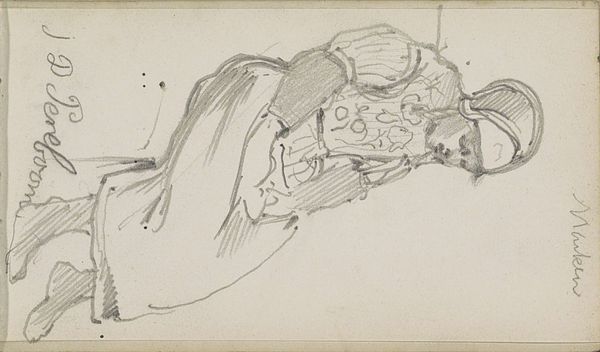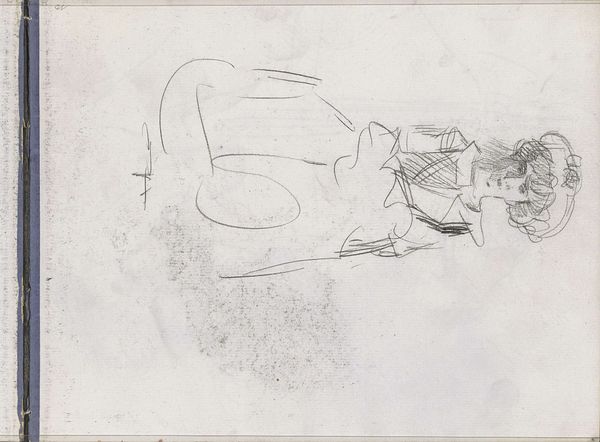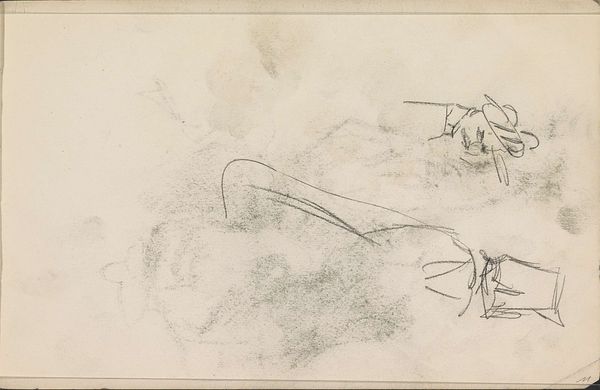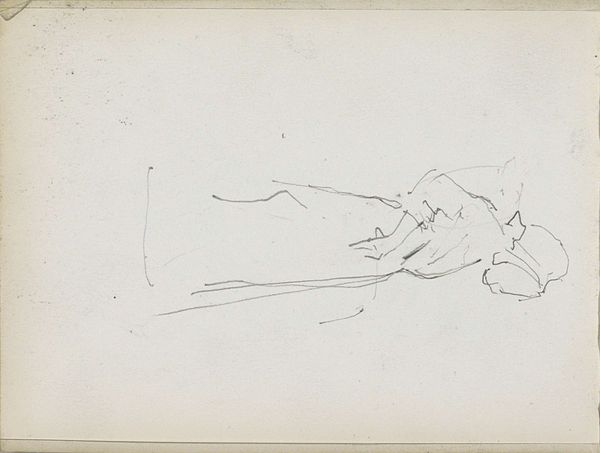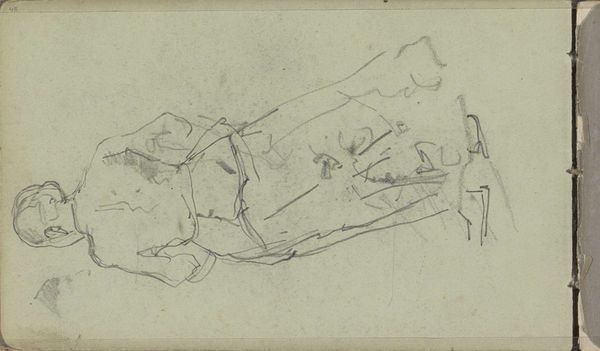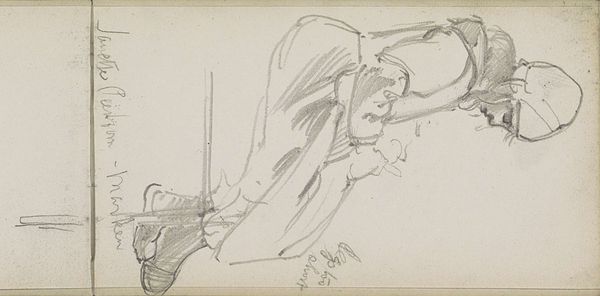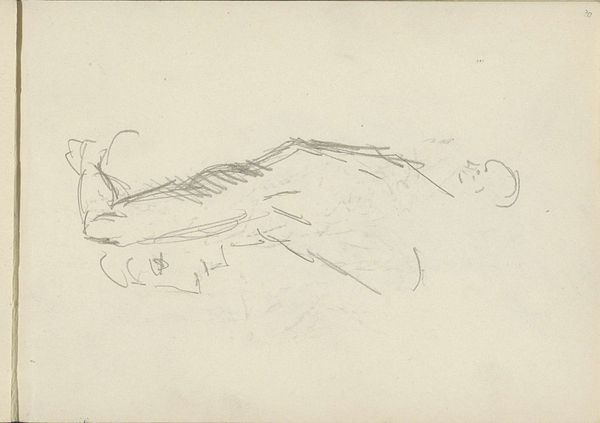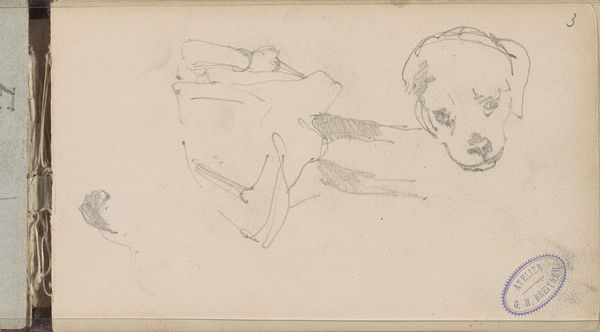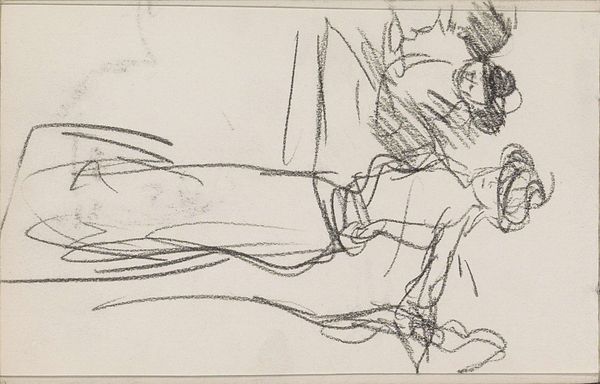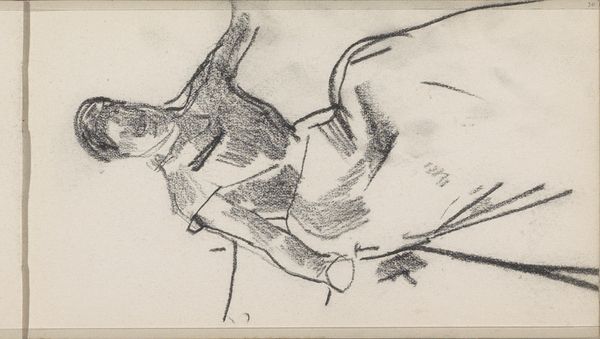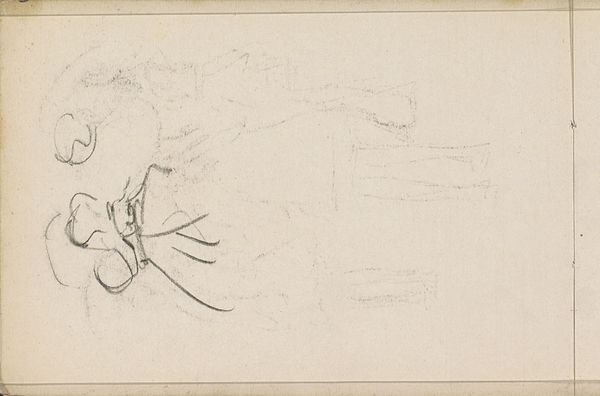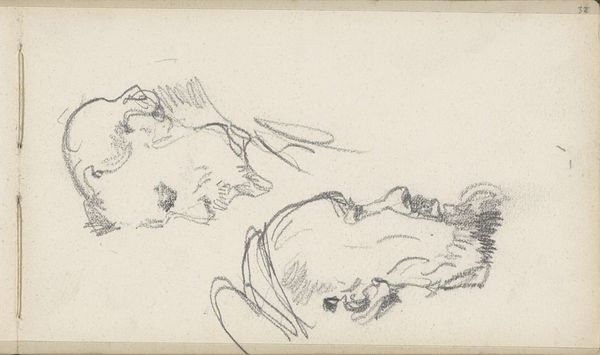
Copyright: Rijks Museum: Open Domain
Editor: Here we have Isaac Israels' "Standing Woman with a Child on her Arm," dating sometime between 1875 and 1934. It’s a pencil drawing on paper currently held at the Rijksmuseum. It looks very spontaneous, like a fleeting moment captured in simple lines. What’s your take on this sketch? Curator: It’s interesting how you say “fleeting moment.” Israels was working in a period deeply concerned with representing modern life. Think about how social shifts – industrialization, urbanization – redefined family structures and the roles of women, in particular. What kind of audience would see images like this? And where? Editor: Perhaps a more intimate audience since it's on paper and is a sketch. Perhaps fellow artists or patrons in his social circles? Curator: Exactly. This was most likely meant to stay in a sketchbook, an intimate record of an observation from daily life. It's fascinating how the unfinished nature can reveal underlying social expectations – note the mother as a primary caregiver. How does the sketch emphasize that relationship? Editor: The way the child is held so close, almost melded into the mother's form... It suggests a protective bond, a certain kind of societal pressure on mothers to nurture. But the loose lines, they don’t idealize the mother-child bond, do they? It's more of a casual depiction. Curator: Precisely! Think about how artistic circles during this time were reflecting new attitudes, especially regarding gender. Were images like these then reflecting or reinforcing established norms? And did the "sketch" format perhaps allowed him to move between these spheres in the public reception of his art? Editor: It's remarkable how much history and social commentary can be found in such a quick sketch. It really challenges the traditional ideas about motherhood but then operates at a sketchbook level. Thank you, it was very insightful to think about that interplay. Curator: It goes to show that even preliminary sketches, often overlooked, offer profound insight into the social forces shaping artistic production and the artist's own negotiation of public expectations.
Comments
No comments
Be the first to comment and join the conversation on the ultimate creative platform.
